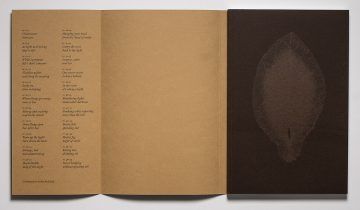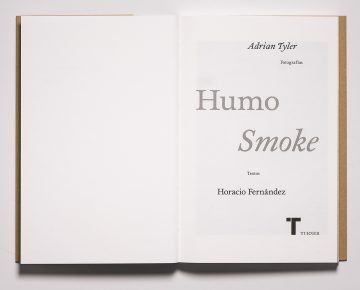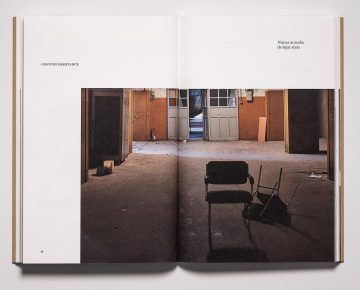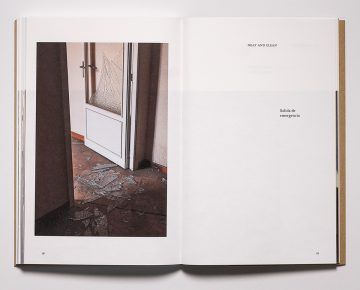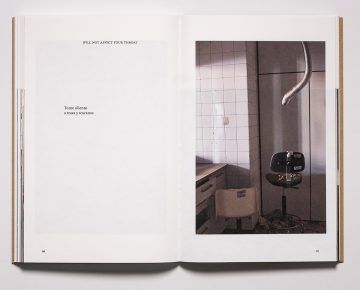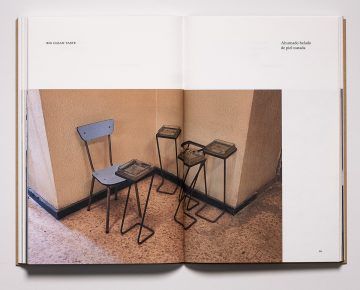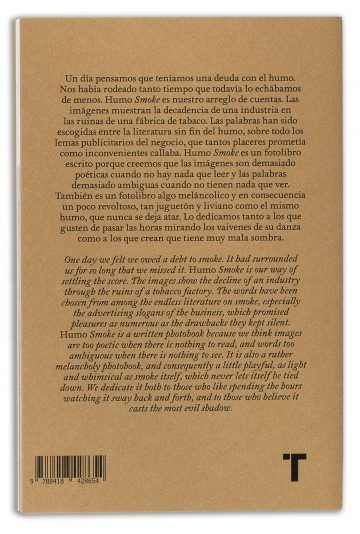Une collaboration entre le photographe Adrian Tyler et l’écrivain et historien de la photographie Horacio Fernández, pour faire un livre de photographie dans lequel le texte est inséparablement intégré à l’image. Les photographies ont été prises dans une fabrique de cigarettes désaffectée, qui était une société de fabrication et de distribution de tabac appartenant à l’État.
Les textes proviennent des archives publicitaires de cigarettes à l’Université de Stanford et les réponses d’Horatio aux images et aux slogans publicitaires non seulement subvertissent l’intention de la publicité, mais ajoutent une nouvelle profondeur et un nouveau sens à l’œuvre.
“Un jour, nous avons senti que nous avions une dette envers la fumée. Elle nous a entourés pendant si longtemps que nous l’avons manqué. Humo Smoke est notre façon de régler le compte. Les images montrent le déclin d’une industrie à travers les ruines d’une usine de tabac. Les mots ont été choisis parmi la littérature sans fin sur la fumée, en particulier les slogans publicitaires de l’entreprise, qui promettait des plaisirs aussi nombreux que les inconvénients qu’ils ont gardé le silence. Humo Smoke est un photobook écrit parce que nous pensons que les images sont trop poétiques quand il n’y a rien à lire, et les mots trop ambigus quand il n’y a rien à voir. C’est aussi un photobook plutôt mélancolique, et par conséquent un peu ludique, aussi léger et fantaisiste que la fumée elle-même, qui ne se laisse jamais attacher. Nous le dédions à la fois à ceux qui aiment passer les heures à le regarder osciller d’avant en arrière, et à ceux qui croient qu’il jette l’ombre la plus maléfique” ; texte en anglais et espagnol.
A collaboration between photographer Adrian Tyler and the writer and photography historian Horacio Fernández, to make a photobook in which the text is inseparably integrated with the image. The photographs were taken in a disused cigarette factory, which was essentially a state-owned tobacco manufacturing and distribution cartel. The texts come from the cigarette advertising archive at Stanford University and Horatio’s responses to the images and advertising slogans not only subvert the intention of the advertising but add new depth and new meaning to the work.
“One day we felt we owed a debt to smoke. It had surrounded us for so long that we missed it. Humo Smoke is our way of settling the score. The images show the decline of an industry through the ruins of a tobacco factory. The words have been chosen from among the endless literature on smoke, especially the advertising slogans of the business, which promised pleasures as numerous as the drawbacks they kept silent. Humo Smoke is a written photobook because we think images are too poetic when there is nothing to read, and words too ambiguous when there is nothing to see. It is also a rather melancholy photobook, and consequently a little playful, as light and whimsical as smoke itself, which never lets itself be tied down. We dedicate it both to those who like spending the hours watching it sway back and forth, and to those who believe it casts the most evil shadow” ; text in English and Spanish.


